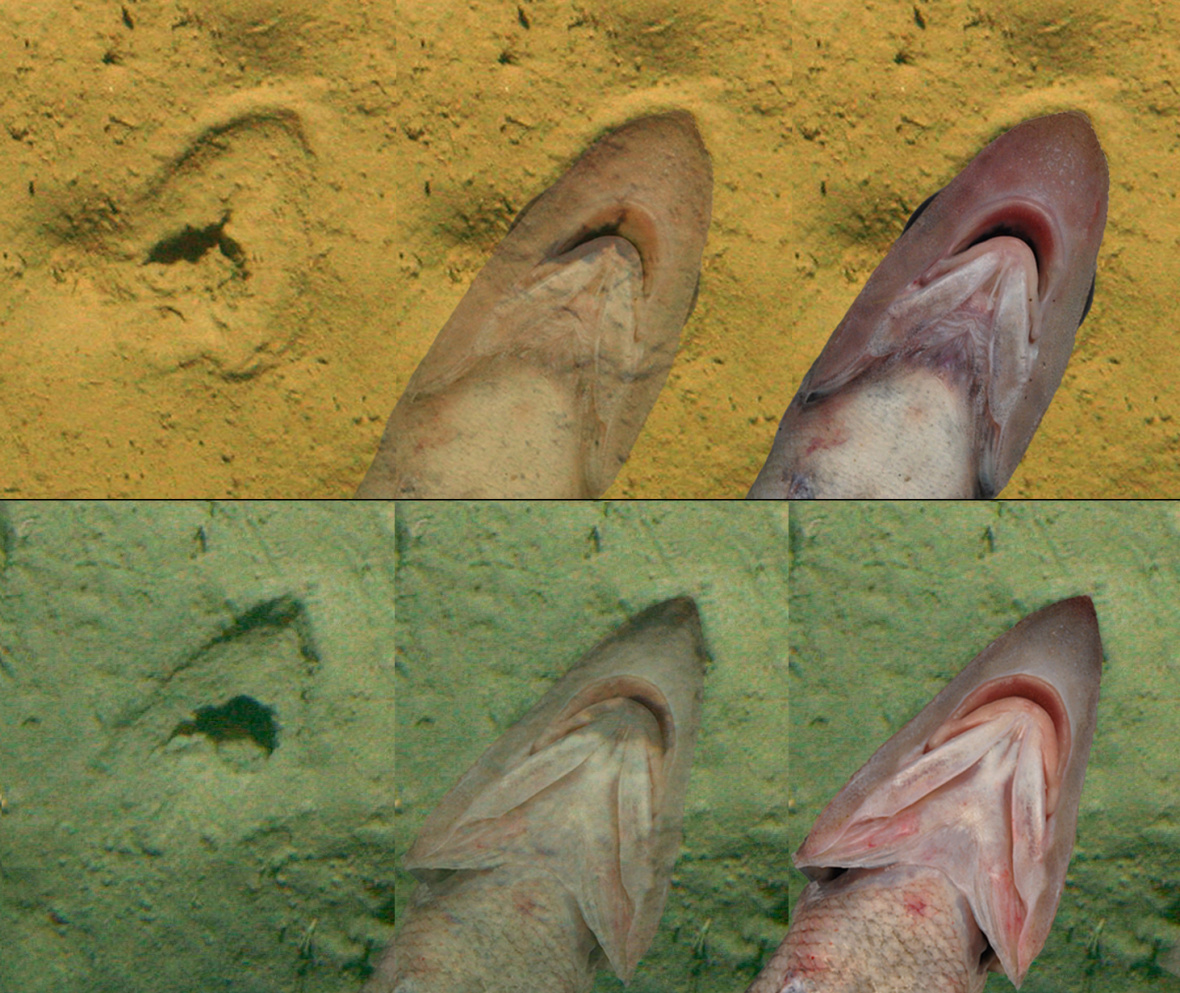The deep sea is full of oddities, from magnetic field-sensing bacteria and other strange microorganisms to massive squid and even “potatoes”. The depths of the ocean off the coast of New Zealand host something particularly curious, or at least they did until recent research exposed its origins: the unexplained “hoofprints” scattered across the seafloor are actually the work of some crafty fish.
First discovered in 2013, the mystery marks have perplexed scientists ever since. They were found more than 450 meters (1,476 feet) deep in Aotearoa New Zealand’s waters by researchers at the country’s National Institute of Water and Atmospheric Research (NIWA).
The team has now analyzed their original footage and, after much head scratching, have come up with an explanation for the cryptic markings, which unfortunately doesn’t involve a small underwater horse.
The culprits, they believe, are deep-sea rattails, also known as grenadiers (Coelorinchus) – some species of which have a pointed snout that looks suspiciously like the peculiar seafloor prints.
“We wondered if these markings could be traces of a rattail foraging in the sediment for its next meal,” NIWA’s Darren Stevens said in a statement.
“These types of rattails have a long snout and an extendable mouth on the underside of their head that allow them to feed off the seafloor, something that other species do not.”
To investigate, Stevens overlaid images of rattails’ uniquely shaped heads with snaps of the seabed impressions, finding, to his surprise, that they fit together perfectly.

The seafloor bitemarks match the head shape of two species of rattail.
Image credit: Stevens et al., Deep Sea Research Part I: Oceanographic Research Papers, 2023
“I had a hunch this might work but I was really surprised how well the head profile images matched the impressions. We were able to provide fairly good evidence that these impressions were made by two grenadier species,” Stevens added, before going on to explain how this discovery could be crucial for our understanding of rattail species by identifying feeding areas and critical habitats.
It is also the first time that their natural foraging behavior has been documented, the team believes, revealing invaluable information about how they hunt. It is thought they contact the seafloor in a head-down position, which may involve a “short burst of speed”, before sucking up sediment and filtering it for their prey, the team writes in a paper presenting their findings.
Imaging such puzzling patterns in the deep sea is by no means easy, let alone attempting to work out what caused them. In this case, the team was able to do so by using the Deep Towed Imaging System (DTIS) to allow them to see the seafloor in exceptional detail, study author Sadie Mills explained. However, most of the time, pinpointing what’s responsible for anything unusual is impossible.
“It is so cool to finally have the validation that what we saw on the video was actually rattails feeding in the mud. It’s like getting a nice reward at the end of many years of watching DTIS footage,” Mills said.
This isn’t the first time that tricksy deep sea critters have sparked a marine mystery: hungry crustaceans were found to be the architects of curious holes at the bottom of the Bering Sea, and these strange octagons stamped across the seabed of the Fram Strait were the work of feeding octopus.
The study is published in Deep Sea Research Part I: Oceanographic Research Papers.
Source Link: Strange Deep Sea "Hoofprints" In New Zealand May Finally Have An Explanation